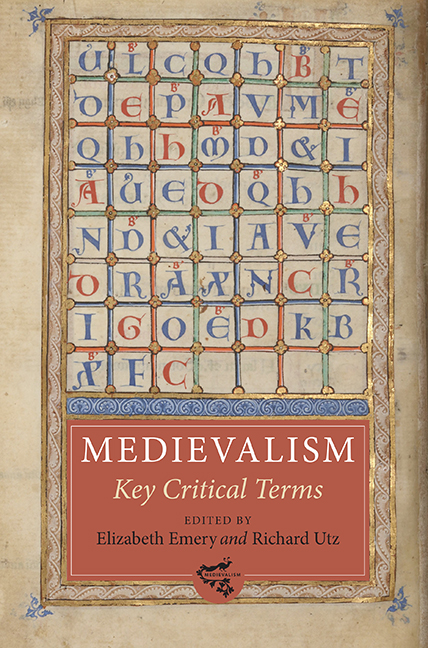Book contents
- Frontmatter
- Dedication
- Contents
- List of Illustrations
- List of Contributors
- Making Medievalism: A Critical Overview
- 1 Archive
- 2 Authenticity
- 3 Authority
- 4 Christianity
- 5 Co-disciplinarity
- 6 Continuity
- 7 Feast
- 8 Genealogy
- 9 Gesture
- 10 Gothic
- 11 Heresy
- 12 Humor
- 13 Lingua
- 14 Love
- 15 Memory
- 16 Middle
- 17 Modernity
- 18 Monument
- 19 Myth
- 20 Play
- 21 Presentism
- 22 Primitive
- 23 Purity
- 24 Reenactment
- 25 Resonance
- 26 Simulacrum
- 27 Spectacle
- 28 Transfer
- 29 Trauma
- 30 Troubadour
- Index
- Medievalism
6 - Continuity
Published online by Cambridge University Press: 08 October 2022
- Frontmatter
- Dedication
- Contents
- List of Illustrations
- List of Contributors
- Making Medievalism: A Critical Overview
- 1 Archive
- 2 Authenticity
- 3 Authority
- 4 Christianity
- 5 Co-disciplinarity
- 6 Continuity
- 7 Feast
- 8 Genealogy
- 9 Gesture
- 10 Gothic
- 11 Heresy
- 12 Humor
- 13 Lingua
- 14 Love
- 15 Memory
- 16 Middle
- 17 Modernity
- 18 Monument
- 19 Myth
- 20 Play
- 21 Presentism
- 22 Primitive
- 23 Purity
- 24 Reenactment
- 25 Resonance
- 26 Simulacrum
- 27 Spectacle
- 28 Transfer
- 29 Trauma
- 30 Troubadour
- Index
- Medievalism
Summary
TO QUALIFY AS a legitimate focus for the study of medievalism a subject must refer to the Middle Ages, yet stand apart from the period. This may seem self-evident, but it glosses over many potential problems with regard to continuity, as demonstrated by illustrations of Dante's Inferno 13 in the fourteenthcentury Italian manuscript Holkham Miscellanae 48 (Fig. 1), in a watercolor series William Blake began in 1824 and left unfinished at his death in 1827 (Fig. 2), and in Seymour Chwast's 2010 graphic novel Dante's Divine Comedy (Fig. 3). All three of these images, which depict harpies roosting on anthropomorphic trees that represent the suicidal, come from series that have been discussed in publications such as Medievally Speaking: Medievalism in Review and The Year's Work in Medievalism.Yet all three of these illustrations portray a text (Dante's Commedia) that may not be medieval, and they do so in ways that depart from even the broadest stereotypes about medieval art, which is almost as controversial as the Middle Ages itself.
David Matthews proposes that the Middle Ages is ultimately a series of post medieval constructs. The start of the period is often associated with the collapse of the Roman Empire, but that fall is itself open to interpretation and has been linked to events as far apart in time as the accession of the emperor Diocletian in 284 and the capitulation of the emperor Romulus Augustus in 476. Nor is there a clear end to the Middle Ages, as feudalism and many other traits associated with the period did not go out with a bang, much less in synchronicity. (Indeed, some writers claim that the Middle Ages continues in places like Mali and Bangladesh, and many scholars have defended the continuity thesis, which holds that the intellectual development of the Middle Ages carried on through at least the Renaissance and/or early modern period.) Moreover, few, if any, traits have been unanimously identified as medieval. While William Manchester recently characterized the era as “A World Lit Only by Fire,” other writers portray it as a highly heterogeneous period enlightened by a wealth of inherited knowledge, a great desire to expand on it, and considerable progress in doing so.
- Type
- Chapter
- Information
- Medievalism: Key Critical Terms , pp. 53 - 62Publisher: Boydell & BrewerPrint publication year: 2014

